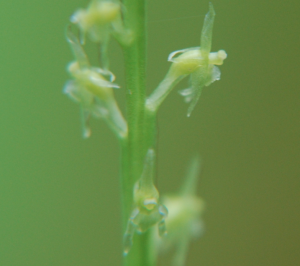
News/Reports
Skeena River Islands Overview: Biological and Physical
ORIGINAL PURPOSE
To set aside unlogged floodplain islands for research on succession in black cottonwood communities.
Physical: The reserve comprises three large and four small islands in a low-gradient reach of the Skeena River where reduced river velocities allow sediments from upstream to settle out, forming many bars and islands. The river is slightly sinuous here, with a width of 0.7 to 1.7 km. Peak flow in the sediment-laden Skeena results from snowmelt, occurs between May 19 and June 29, and may reach 9000 m3/s. The low flow in March may be 50 to 100 times less than peak flow. These flow variations result in considerable channel shifting, and both erosion and accretion of islands. The islands are low and flat, have a high water table and may occasionally be flooded. A variety of sand and gravel bars is present, including point bars, channel side bars and mid channel bars.
For the complete PDF see: Skeena River ER 63
Biological: Alluvial processes result in a series of vegetation bands around the island perimeters. The outermost band, subject to considerable flooding and scouring, is dominated by horsetails (northern scouring-rush and common horsetail) in association with willows (Sitka and Pacific willows). Between this zone and the more extensive black cottonwood forest is a narrow band of red alder having an understory dominated by red-osier dogwood and horsetails. Most of the island surfaces support stands of black cottonwood in which red elderberry, salmonberry and horsetails are abundant.
Birds such Townsend’s and Orange-crowned Warblers, thrushes, Steller’s Jays and Ruffed Grouse occur in the cottonwood forest; Killdeers and Spotted Sandpipers around the shorelines. Bald Eagles are common in the
area. The islands have moderately good Moose habitat and are believed to be important calving sites for Moose. Beaver also occur. Side-channels and backchannels within the ER provide important spawning and rearing habitat for salmonids, including all 5 species of Pacific Salmon, Steelhead, and including blue-listed species such as Bull Trout and Dolly Varden. Potential for Wolverine and Trumpeter Swan to occur within the ER boundaries.
SIGNIFICANT SPECIES/COMMUNITIES
Sitka spruce – salmonberry association -Red listed
Grizzly Bear- Blue listed
White adder’s tongue orchid-Blue listed
Bull Trout-Blue listed
Dolly Varden-Blue listed
RESEARCH OPPORTUNITIES:
The reserve is an ideal site to study natural regeneration of black cottonwood, natural succession on unlogged floodplain islands and relationships between alluvial processes and floodplain vegetation along a large, unregulated river. The affects of climate change on these processes would also lend itself to research.
SCIENTIFIC NAMES OF SPECIES MENTIONED IN THE SKEENA RIVER ER ACCOUNT
Flora
alder, red (Alnus rubra)
cottonwood, black (Populus trichocarpa ssp. trichocarpa)
dogwood, red-osier (Cornus stolonifera)
elderberry, red (Sambucus racemosa)
horsetail, common (Equisetum arvense)
orchid, white adder’s-mouth (Malaxis brachypoda)
salmonberry (Rubus spectabilis)
scouring-rush, northern (Equisetum variegatum ssp. alaskanum)
willow, Pacific (Salix lucida ssp. lasiandra)
Pacific willows willow, Sitka (Salix sitchensis)
Fauna
Bear, Grizzly (Ursus arctos)
Beaver, American (Castor canadensis)
Dolly Varden (Salvelinus malma)
Eagle, Bald (Haliaeetus leucocephalus)
Grouse, Ruffed (Bonasa umbellus)
Jay, Steller’s (Cyanocitta stelleri)
Killdeer (Charadrius vociferous )
Moose (Alces americanus)
Salmon, Chinook (Oncorhynchus tshawytscha )
Salmon, Chum (Oncorhynchus keta)
Salmon, Coho (Oncorhynchus kisutch)
Salmon, Pink (Oncorhynchus gorbuscha)
Salmon, Sockeye (Oncorhynchus nerka)
Sandpiper, Spotted (Actitis macularius)
Trout, Bull (Salvelinus confluentus)
Trout, Rainbow (aka Steelhead*) (Oncorhynchus mykiss) Warbler, Orange-crowned (Vermivora celata)
Warbler, Townsend’s (Dendroica townsendi)

